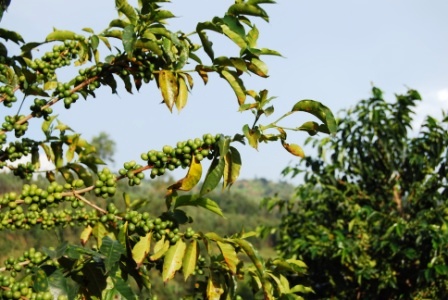Ethiopia emphasizes fruity and floral boutique coffee
In fact, according to Ms. Knudsen, people started drinking fine coffee, but then as coffee demand continued to grow, new coffee varieties were discovered and used, and the quality of coffee declined. Later, people gradually abandoned this bad and bad coffee and began to switch to other drinks. In this context, Ms Knudsen's re-awakening to the value of fine coffee has led to a fine coffee craze. In the United States, Starbucks has emerged as a representative of the pursuit of boutique coffee enterprises and stores. The market for specialty coffee also continued to grow, becoming one of the fastest-growing markets in the foodservice industry in the 1990s with the proliferation of specialty coffee retailers and cafes, reaching $12.5 billion in the United States alone in 2007. Fine coffee has become the fastest-growing coffee market. Coffee producing and importing countries around the world are aware of the huge potential of the specialty coffee market and continue to make efforts in specialty coffee production and preparation.
Ethiopia aroma 5 points brightness 4.5 points mellow 5 points flavor 4.5 points aftertaste 4.5 points
Suitable for baking: Light/Medial/City light baking to city baking can be, if so, be sure to use light baking, or even before the end of a burst to stop baking (Yirgacheffe can be)! To emphasize flavor or blend with espresso recipes, bake until just into the second burst, which will give you a thicker flavor. Both hidamo and harald are good for this condition.
Ethiopia is historically the birthplace of coffee. In the sixth century AD, shepherds in the town of Kaffa discovered that sheep were excited to eat certain red fruits, so they picked the red berries growing on the trees and ate them. This harvest opened the door to coffee all over the world, and its influence has not diminished to this day. Ethiopia grows coffee on plateaus above 1500 meters above sea level. Seven Harar plateaus are the native places of Arabica coffee. At present, Ethiopia still has many native coffee forests. It can be said that it is a coffee gene bank, and this gene bank will be the solution to many coffee problems. Ethiopian coffee beans are of such high quality and so varied in flavor that few countries can beat them. As for the processing of raw beans, some places use solarization, some use washing, and some use both (Sidamo, Sidamo), which is part of the reason why Ethiopian flavors are so diverse. Djimmah in the west, Hidamo in the middle and Harar in the east are Ethiopia's three major producing areas, the most special of which is Yirgacheffe in Hidamo Province. This coffee has a fruity, floral and honey fragrance, coupled with a tea-like flavor that is even more memorable. It is the starting point for many people to enter fine coffee. Of course, the wild taste of Gemma and Harald's characteristic wine aroma also drive many coffee fans crazy. Ethiopian coffee varies greatly from batch to batch, so pay attention to the batch number when purchasing, indicating that two bags of coffee from the same region may taste a hundred thousand miles apart, and Ethiopian coffee is usually better harvested early, which is different from coffee from many other regions.

Important Notice :
前街咖啡 FrontStreet Coffee has moved to new addredd:
FrontStreet Coffee Address: 315,Donghua East Road,GuangZhou
Tel:020 38364473
- Prev

Introduction to the types of coffee trees the ingredients of coffee machine detergent
Coffee (Xoffea arabica Linn) Coffee is a perennial evergreen shrub or small tree of Rubiaceae. It is a horticultural perennial cash crop with the characteristics of fast growth, high yield, high value and wide market. Wild coffee trees can grow to a height of 5 to 10 meters, but coffee trees planted on the manor are often cut to a height of less than 2 meters in order to increase the amount of fruit and facilitate harvesting.
- Next

Conscious coffee grinder in Guatemala coffee bean producing area
Guatemala is bordered by Mexico to the north, Honduras and El Salvador to the south, the Caribbean to the east and the Pacific Ocean to the west, with tropical rain forests, volcanic geology, plateau valleys and changeable microclimate. Guatemalan coffee once enjoyed a reputation as the best quality coffee in the world. The extra-hard coffee beans here are full-grained, delicious and balanced, and the coffee made with it is pure and strong.
Related
- Does Rose Summer choose Blue, Green or Red? Detailed explanation of Rose Summer Coffee plots and Classification in Panamanian Jade Manor
- What is the difference between the origin, producing area, processing plant, cooperative and manor of coffee beans?
- How fine does the espresso powder fit? how to grind the espresso?
- Sca coffee roasting degree color card coffee roasting degree 8 roasting color values what do you mean?
- The practice of lattes: how to make lattes at home
- Introduction to Indonesian Fine Coffee beans-- Java Coffee producing area of Indonesian Arabica Coffee
- How much will the flavor of light and medium roasted rose summer be expressed? What baking level is rose summer suitable for?
- Introduction to the characteristics of washing, sun-drying or wet-planing coffee commonly used in Mantenin, Indonesia
- Price characteristics of Arabica Coffee Bean Starbucks introduction to Manning Coffee Bean Taste producing area Variety Manor
- What is the authentic Yega flavor? What are the flavor characteristics of the really excellent Yejasuffi coffee beans?

